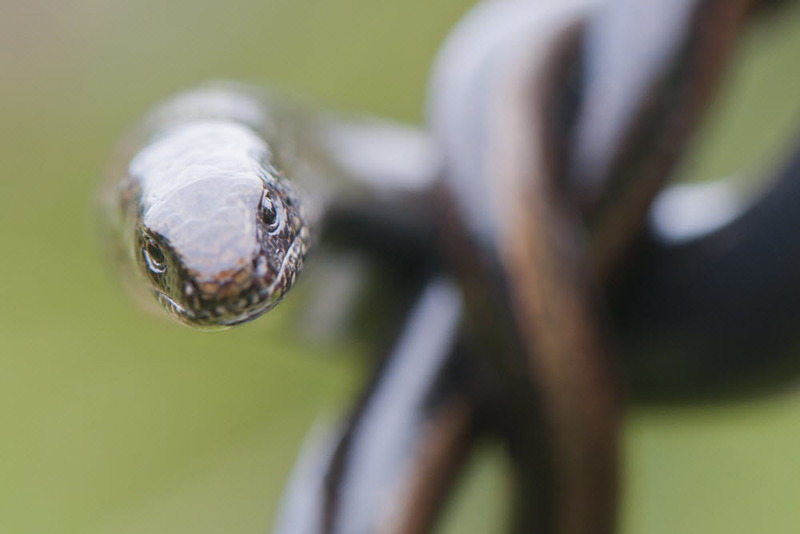Slow worm habits
 The slow worm’s scientific name Anguis fragilis means ‘fragile snake’, but in fact they are not snakes at all, they are legless lizards. The reason they are referred to as fragile in their name is that they have the ability to shed their tails if caught by a predator. The tail continues wiggling, hopefully distracting the would-be predator and allowing the slow worm to make its escape. Sometimes you can see stumpy slow worms who have had to used their emergency escape trick. Whilst the tail does regrow, it is no longer detachable. Slow worms are also distinguishable from snakes because they have eyelids and ear openings.
The slow worm’s scientific name Anguis fragilis means ‘fragile snake’, but in fact they are not snakes at all, they are legless lizards. The reason they are referred to as fragile in their name is that they have the ability to shed their tails if caught by a predator. The tail continues wiggling, hopefully distracting the would-be predator and allowing the slow worm to make its escape. Sometimes you can see stumpy slow worms who have had to used their emergency escape trick. Whilst the tail does regrow, it is no longer detachable. Slow worms are also distinguishable from snakes because they have eyelids and ear openings.
Adults emerge from hibernation in late March, with breeding taking place in April and May. It is rare to see slow worms basking in the sun. Instead, they prefer to hide under something that will heat up in the sun, like a sheet of corrugated iron or a rock. They will also hide in the warmth of a compost heap.
Slow worms mate for up to ten hours at a time. Females incubate their young within egg sacs inside their bodies and ‘give birth’ to live young towards the end of the summer. Autumn is spent feeding in readiness for hibernation, which runs from November to March. It takes up to eight years for slow worms to reach their full-grown size. They have to shed their skins at regular intervals throughout their lives.
Photo by Sam Rowley.
Read More: Slow worms and humans